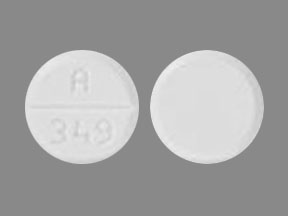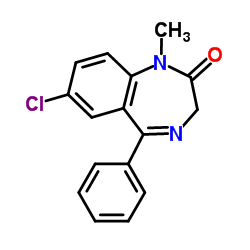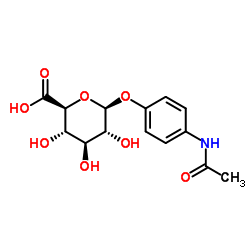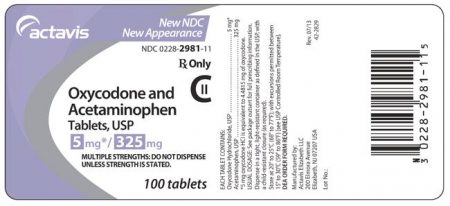Contents
- What is A349 white pill?
- Active ingredients of A349 white pills
- A349 white pill chemistry
- A349 white pill uses
- A349 white pill legal status
- What are different brand names for combinations of oxycodone and acetaminophen
- A349 white pill price and prescription
- A349 white pills mechanism of action
- A349 white pill side effects
- A349 white pill pharmacokinetics
- How long A349 pills stay in the system?
- A349 white pill safety of use
What is A349 white pill?
A349 is an imprint on a pill identified as white and round shaped. Pill contains acetaminophen in dose of 325 mg and oxycodone hydrochloride in dose of 5 mg. Oxycodone is an opioid drug and strong analgetic medication, sometimes called a narcotic. Acetaminophen is a less potent pain reliever drug that increases the effects of oxycodone. This combination pill is used to treat chronic moderate to severe pain. It is supplied by Actavis Elizabeth LLC.
- Imprint: A349
- Strength: 325 / 5 mg
- Color: White
- Size: 19.00 mm
- Shape: Round
- Availability: Prescription only
- Drug Class: Narcotic analgesic combinations
- Pregnancy Category: C – Risk cannot be ruled out
- CSA Schedule: Schedule 2 – high potential for abuse
- Labeler / Supplier: Actavis Elizabeth LLC
- National Drug Code (NDC): 00228-2981
- Inactive Ingredients: croscarmellose sodium, microcrystalline cellulose, povidone, pregelatinized corn starch, silicon dioxide and stearic acid.
Active ingredients of A349 white pills
A349 white pills contain a combination of two active ingredients: oxycodone and acetaminophen.
Oxycodone or 14- hydroxydihydrocodeinone is a semisynthetic opioid analgesic substance which occurs as a white to off-white fine crystalline powder.
Acetaminophen is a non-opiate, non-salicylate analgesic and antipyretic substance which occurs as a white, odorless, crystalline powder.
A349 white pill chemistry
Oxycodone:
IUPAC name: (4R,4aS,7aR,12bS)-4a-hydroxy-9-methoxy-3-methyl-2,4,5,6,7a,13-hexahydro-1H-4,12-methanobenzofuro[3,2-e]isoquinoline-7-one
Molecular formula: C18H21NO4
Molecular weight: 315.364 g/molg/mol
Molecular structure:
Drug class: Oxycodone belongs to the class of organic compounds known as phenanthrenes and derivatives which are polycyclic compounds containing a phenanthrene moiety, that is a tricyclic aromatic compound with three non-linearly fused benzene.
Acetaminophen:
IUPAC name: N-(4-hydroxyphenyl)acetamide
Molecular formula: C8H9NO2
Molecular weight: 151.163 g/mol
Molecular structure:
Drug class: Acetaminophen belongs to the class of organic compounds known as 1-hydroxy-2-unsubstituted benzenoids which are phenols that a unsubstituted at the 2-position.
A349 white pill uses
A349 pills are prescribed for the treatment of pain which is severe enough to require an opioid analgesic and for which alternative treatments are inadequate.
FDA approved indications are:
- Severe Chronic Pain
- Moderate Acute pain
- Moderate Chronic pain
- Severe Acute pain
A349 white pill legal status
A349 pills have a high potential for abuse and are classified as a Schedule 2 by the Controlled Substances Act (CSA). This means that the drug has a currently accepted medical use in treatment in the United States or a currently accepted medical use with severe restrictions. Abuse of the drug may lead to severe psychological or physical dependence.
What are different brand names for combinations of oxycodone and acetaminophen
Different brand names for combinations of oxycodone and acetaminophen are:
- Dihydrone
- Dinarkon
- Eucodal
- Oxiconum
- Oxycodeinon
- Oxycodone
- Oxycodone Hydrochloride
- Oxycone
- Oxycontin
- Pancodine
- Theocodin
A349 white pill price and prescription
Generic combination of oxycodone and acetaminophen is covered by most Medicare and insurance plans, however some pharmacy coupons or cash prices may be lower. The lowest GoodRx price for the most common version of oxycodone / acetaminophen is around $23.69, 78% off the average retail price of $107.69.
A349 white pills mechanism of action
Oxycodone exhibits its actions as a weak agonist at mu, kappa, and delta opioid receptors within CNS. This drug mainly acts on mu-type opioid receptors, which are coupled with G-protein receptors and works as modulators, both positive and negative, of synaptic transmission via G-proteins that activate effector proteins.
After binding to its receptors, oxycodone stimulates the exchange of GTP for GDP on the G-protein complex. Since the effector system is adenylate cyclase and cAMP placed at the inner surface of the plasma membrane, then opioids decrease intracellular cAMP concentrations by inhibiting enzyme adenylate cyclase.
Subsequently, the release of nociceptive neurotransmitters such as dopamine, acetylcholine, substance P, GABA, and noradrenaline is inhibited. Opioids such as oxycodone may also inhibit the release of hormones such as vasopressin, somatostatin, insulin, and glucagon.
Opioids may close N-type voltage-operated calcium channels by binind on kappa-receptors and open calcium-dependent inwardly rectifying potassium channels after binding to mu and delta receptor agonist. This results in hyperpolarization and reduced neuronal excitability.
Acetaminophen belongs to the group of weaker analgesics. It is suggested that this drug acts primarily in the CNS, where it increases the pain threshold inhibiting both isoforms of enzyme cyclooxygenase, COX-1, COX-2, and COX-3 involved in prostaglandin (PG) synthesis. Compared to other NSAIDs, acetaminophen does not inhibit enzyme COX in peripheral tissues and, thus, has no peripheral anti-inflammatory affects.
Studies also found that acetaminophen selectively blocks a variant of the COX enzyme that is different from the known variants COX-1 and COX-2 which is now referred to as COX-3. However, its exact mechanism of action is still poorly understood. Acetaminophen’s antipyretic properties are most likely due to direct effects on the heat-regulating centers of the hypothalamus.
A349 white pill side effects
Oxycodone may cause following side effects:
Common side effects:
- Vomiting
- Loss of appetite
- Nausea
- Dizziness
- Dry mouth
- Drowsiness
- Stomach pain
- Flushing
- Sweating
- Weakness
- Headache
- Mood changes
Serious side effects:
- Chest pain
- Fast or slow or irregular heartbeat
- Hives
- Rash
- Itching
- Swelling of the face, tongue, throat, lips, eyes, feet, hands, ankles, or lower legs
- Seizures
- Constipation
- Difficulty breathing or swallowing
- Extreme drowsiness
- Lightheadedness when changing positions
Acetaminophen may cause following side effects:
Common side effects:
- Constipation
- Agitation
- Headaches
- Insomnia
- Vomiting
Serious side effects:
- Red, peeling or blistering skin
- Rash
- Hives
- Itching
- Swelling of the face, throat, tongue, lips, eyes, hands, feet, ankles, or lower legs
- Hoarseness
- Difficulty breathing or swallowing
- Pain in upper abdomen
- Loss of appetite
- Dark urine
- Clay-colored stools,
- Yellowing of the skin or eyes (jaundice)
- Nausea
- Sweating
- Unusual bleeding or bruising
A349 white pill pharmacokinetics
Oxycodone
- Absorption: The mean absolute oral bioavailability of oxycodone in cancer patients was reported to be about 87%
- Distribution: Oxycodone has been shown to be 45% bound to human plasma proteins in vitro. The volume of distribution after intravenous administration is 211.9 ±186.6 L.
- Metabolism and elimination: In humans, oxycodone is extensively metabolized to noroxycodone by means of CYP3A-mediated N-demethylation, oxymorphone by means of CYP2D6-mediated O-demethylation, and their glucuronides.
Acetaminophen
- Absorption: Absorption of acetaminophen is rapid and almost complete from the GI tract after oral administration. With overdosage, absorption is complete in 4 hours.
- Distribution: Acetaminophen is mostly uniformly distributed throughout most body fluids. Binding of the drug to plasma proteins is variable; only 20% to 50% may be bound at the concentrations encountered during acute intoxication.
- Metabolism and elimination: Elimination of acetaminophen is principally by liver metabolism (conjugation) and subsequent renal excretion of metabolites. The drug is primarily metabolized in the liver by first-order kinetics and involves three principal separate pathways: conjugation with glucuronide; conjugation with sulfate; and oxidation via the cytochrome, P450-dependent, mixed-function oxidase enzyme pathway to form a reactive intermediate metabolite, which conjugates with glutathione and is then further metabolized to form cysteine and mercapturic acid conjugates. The key CYP450 isoenzyme involved appears to be CYP2E1, with CYP1A2 and CYP3A4 as additional pathways. Approximately 85% of an oral dose appears in the urine within 24 hours of administration, most of the glucuronide conjugate, with small amounts of other conjugates and unchanged drug.
How long A349 pills stay in the system?
Most data suggest that the elimination half-life of oxycodone is about 3.51 hours +/- 1.43 hours. According to this, on average, it will take about 19.31 hours to fully eliminate the oxycodone part of the A349 pill from the body. The elimination half-life time of the acetaminophen portion in A349 is approximately 3.1 hour, which is significantly less than oxycodone.
According to this data, it can be expected that acetaminophen from A349 pill will be cleared from the body in just over 17 hours. Some data also speculate that the half-life of acetaminophen could even be shorter (at 2 hours), resulting in its clearance in under 11 hours.
Therefore a majority of A349 users will have fully (100%) eliminate both the oxycodone and acetaminophen ingredients from their system within 24 hours. Very rarely, clearance may be prolonged between 24 and 48 hours.
A349 white pill safety of use
- A349 pills may expose patients and other users to the risks of opioid addiction, abuse, and misuse, which can lead to overdose and death.
- Serious, life-threatening, or fatal respiratory depression may occur with use of A349 pills.
- Prolonged use of A349 pills during pregnancy can result in neonatal opioid withdrawal syndrome, which may be life-threatening if not recognized and treated, and requires management according to protocols developed by neonatology experts.
- The concomitant use of A349 pills with all cytochrome P450 3A4 inhibitors may result with the increase in oxycodone concentrations in plasma, which could additionally increase or prolong side effects and may cause potentially fatal respiratory depression. Furthermore, discontinuation of a concomitantly used cytochrome P450 3A4 inducer may result in an increase in oxycodone plasma concentration.
- Acetaminophen has been associated to provoke acute liver failure and may result in liver transplant and death. Most of these cases are associated with the use of acetaminophen at doses that exceed 4,000 mg per day and often involve more than one acetaminophen-containing product.




